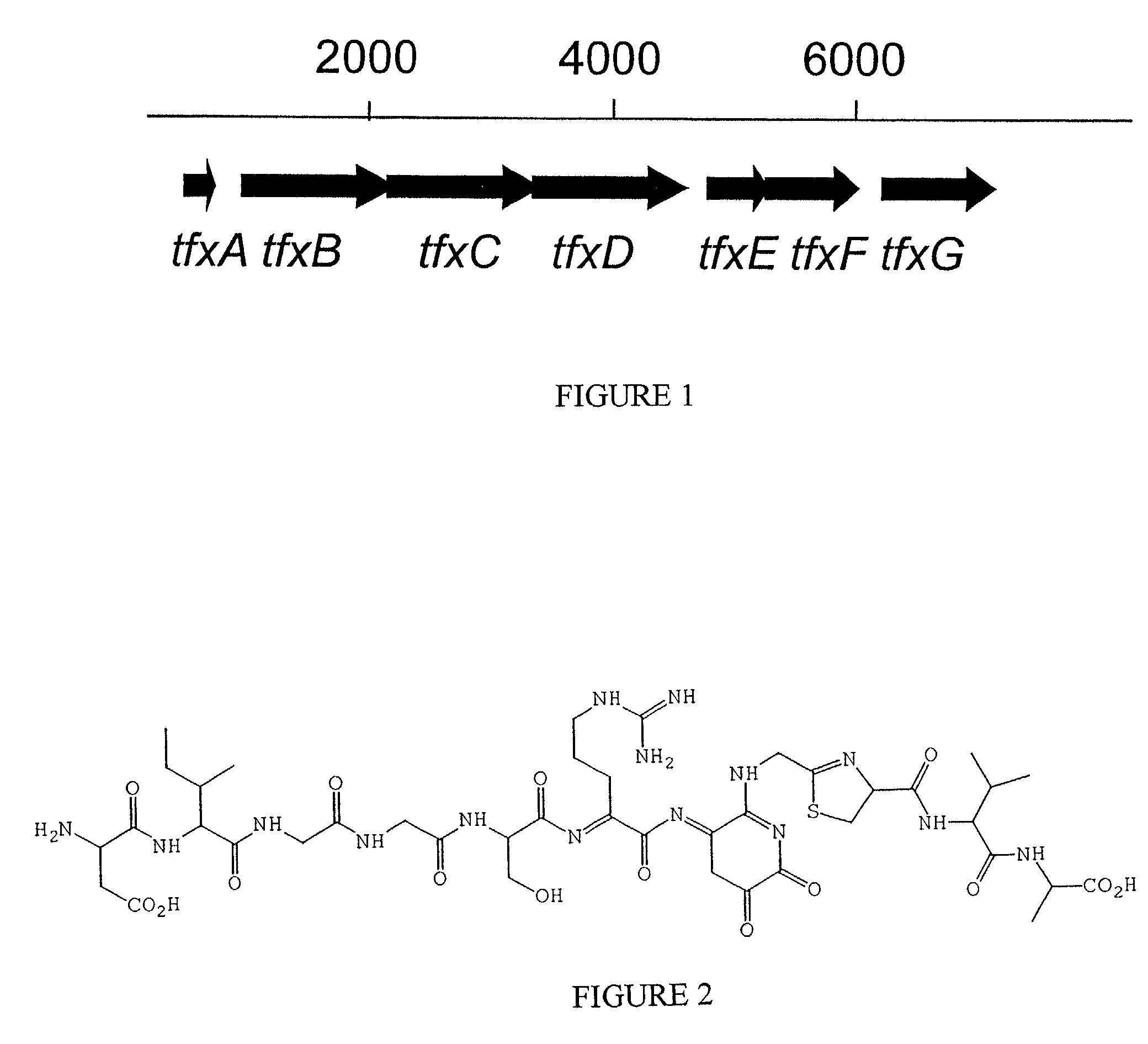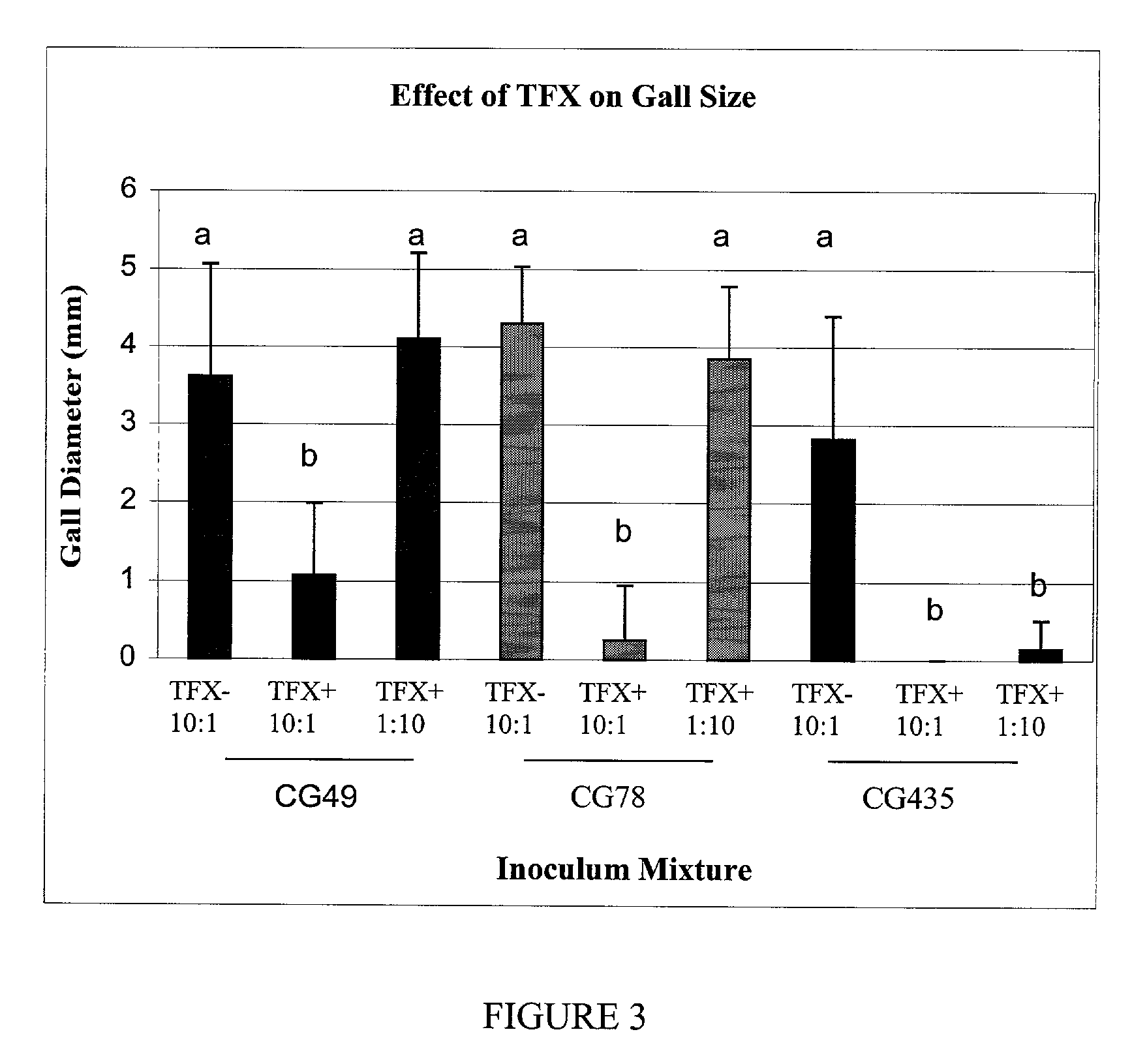Biological control of crown gall disease
a technology of biological control and crown gall disease, applied in the field of biological control can solve the problems of reducing the yield that would otherwise be produced by that plant, economically damaging bacterial disease, and the normal habitat of >agrobacterium /i>species, etc., and achieve novel and effective, inhibiting the occurrence of crown gall disease, novel and effective
- Summary
- Abstract
- Description
- Claims
- Application Information
AI Technical Summary
Benefits of technology
Problems solved by technology
Method used
Image
Examples
examples
[0040]Bacterial and plant growth conditions, strain construction
[0041]Bacterial strains investigated are listed in Table 1 below. The A. vitis strains (without pT2TFXK or pT2TX3K) were obtained from Dr. T. J. Burr, Cornell University. Bacteria were grown on BSM agar medium at 27° C. A. vitis F2 / 5(pT2TFXK) and F2 / 5(pT2TX3K) were constructed by triparental mating using standard procedures. Transconjugants were selected on BSM medium amended with 50 ppm kanamycin. Trimethoprim (10 ppm) was added to counterselect the E. coli donor and helper strains. Strains containing the plasmids pT2TFXK and pT2TX3K were grown for routine propagation on BSM amended with 50 ppm kanamycin. Prior to use in making inoculum suspensions for biological control assays these strains were grown overnight on BSM agar without kanamycin. The plasmids pT2TFXK and pT2TX3K both contain the full operon encoding the TFX peptide toxin, including genes tfxA through tfxG.
[0042]Plants (Nicotiana glauca) were grown in the g...
PUM
| Property | Measurement | Unit |
|---|---|---|
| Magnetic field | aaaaa | aaaaa |
| Magnetic field | aaaaa | aaaaa |
| Biological properties | aaaaa | aaaaa |
Abstract
Description
Claims
Application Information
 Login to View More
Login to View More - R&D
- Intellectual Property
- Life Sciences
- Materials
- Tech Scout
- Unparalleled Data Quality
- Higher Quality Content
- 60% Fewer Hallucinations
Browse by: Latest US Patents, China's latest patents, Technical Efficacy Thesaurus, Application Domain, Technology Topic, Popular Technical Reports.
© 2025 PatSnap. All rights reserved.Legal|Privacy policy|Modern Slavery Act Transparency Statement|Sitemap|About US| Contact US: help@patsnap.com


